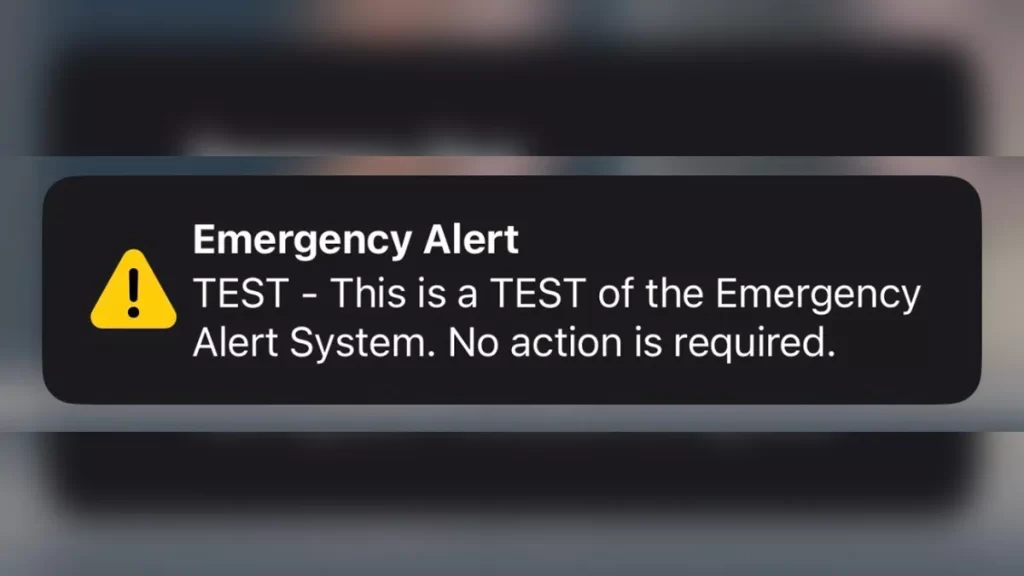In just a couple days our phones, TVs and radios will be flooded with nationwide alerts. FEMA, the Federal Emergency Management Agency, will be sending out the multiple tests.
The reason these many alerts are going off is to check the nationwide Emergency Alert System, or EAS and the Wireless Emergency Alerts, or WEA.
If all goes well, they will occur on Wednesday, October 4th at roughly 12:20 pm, however if for some reason they don’t go off, a backup alert date is set for October 11th.
The WEA alert will be sent to cell phones. It will display in either English or Spanish, depending on which language your phone is set to. Each cellphone should only receive the message one time.
However, the EAS part of the alert will be sent out to all radios and TVs, and will be approximately one minute long.
“To help ensure that these alerts are accessible to the entire public, including people with disabilities, the alerts are accompanied by a unique tone and vibration,” said FEMA, talking about the WEA portion of the alert.
There are many different reasons why an actual WEA alert would be sent out. Below are just a few examples from FEMA:
- Presidential Alerts are a special class of alerts only sent during a national emergency.
- Imminent Threat Alerts include natural or human-made disasters, extreme weather, active shooters, and other threatening emergencies that are current or emerging.
- Public Safety Alerts contain information about a threat that may not be imminent or after an imminent threat has occurred. Public safety alerts are less severe than imminent threat alerts.
- America’s Missing: Broadcast Emergency Response (AMBER) Alerts are urgent bulletins issued in child-abduction cases. Rapid and effective public alerts often play a crucial role in returning a missing child safely. An AMBER Alert instantly enables the entire community to assist in the search for and safe recovery of the child.
- Opt-in Test Messages assess the capability of state and local officials to send their WEAs. The message will state that this is a TEST.
If someone nearby was sent a WEA and you didn’t, it probably is because of bad cell reception, or if you were on a call, because some phones don’t show the alert during a call, however it varies to do make and model.
Another reason FEMA says you won’t receive an alert is because your phone was:
- Set to “off” or “airplane mode”
- Not connected to a cell site broadcasting the alert
- Connected to a cell site that is not broadcasting the alert, undergoing maintenance or is out-of-service
- Connected to a Virtual Private Network (VPN)
- The device is opted out of receiving alerts. The location of the alerts opt-in/opt-out menu typically is in the notification settings menu.
- If your mobile phone continues to receive the same WEA over and over it is most likely an issue with the device. Mobile phones should ignore subsequent re-broadcasts of a WEA but sometimes a device gets stuck in a loop repeatedly alerting for the same WEA. Powering off the device and turning it back on may help.
A few more things FEMA wants you to know about WEAS:
- Follow the action advised by the alert. The message will show the type and time of the alert, any action you should take, and the agency issuing the alert. The message will be no more than 360 characters. You can get more details from your local authorities, local news or trusted social media sources.
- WEAs have a unique tone and vibration, both repeated twice. WEA messages are free and will not count towards texting limits on your wireless plan.
- Wireless providers are selling devices with WEA capability included. To find out if your phone can receive WEA alerts, contact your wireless provider. All the major providers participate in WEA on a voluntary basis.
- If you are on a phone call when a WEA is sent in your area, the message will be delayed until you finish your call.
- WEAs do not track your location. They are broadcast from area cell towers to mobile phones within the defined geographic location. Every WEA-capable phone within range receives the message.
- WEAs are not affected by network congestion.
FEMA is a government organization that helps with safety. The WEA and EAS test alerts sent out by FEMA are occurring on October 4th to make sure the alert system is working properly. If you have any more questions about the alerts occurring on October 4th visit FEMA.gov or look up Nationwide Emergency Alert Test.





